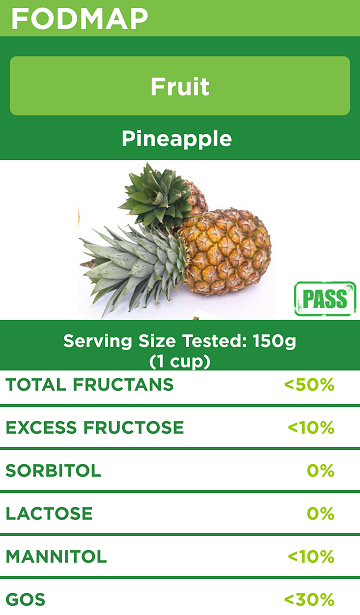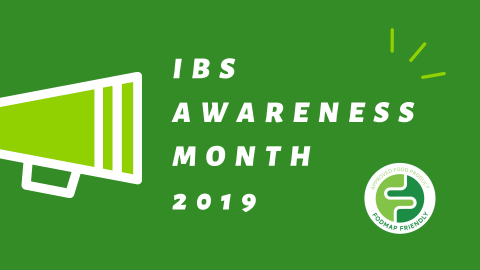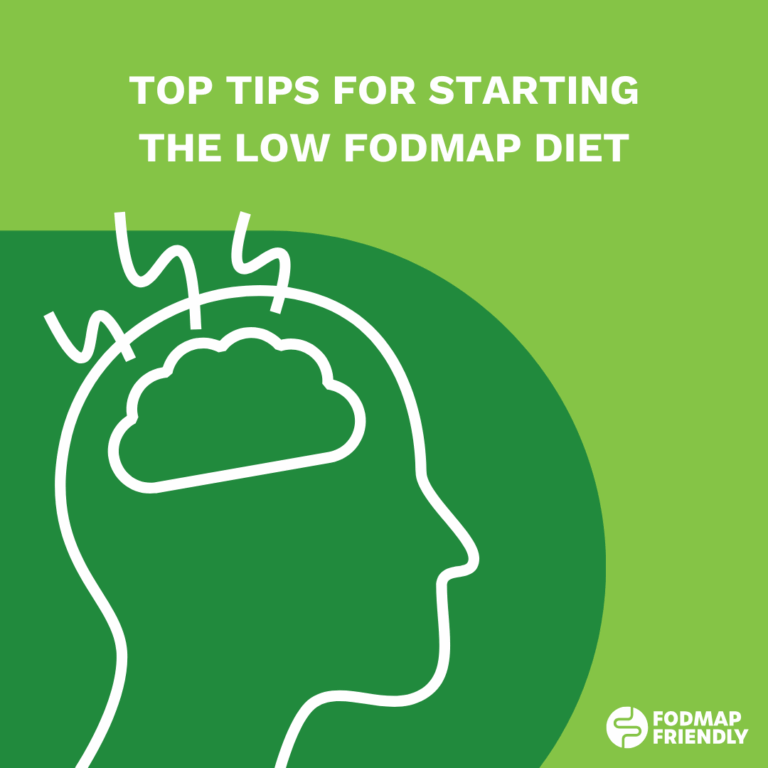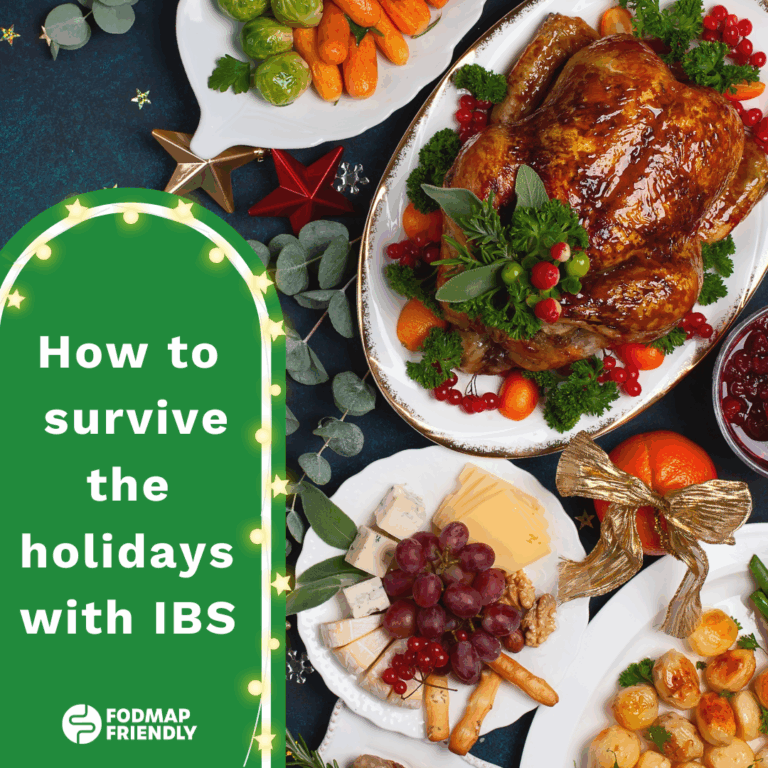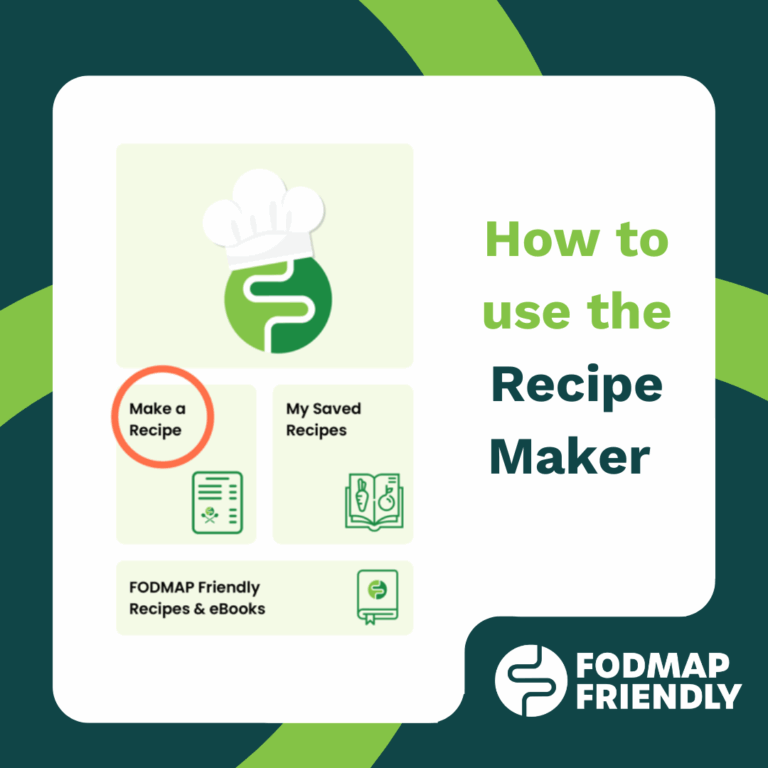One of the most frequently asked questions from our FODMAP Friendly community is…
“How can this product be certified as FODMAP Friendly when there’s ‘X ingredient’ in it?”
X being garlic powder, onion powder, honey, dates… the list does on!
In today’s blog, we’ll refresh the key points about the low FODMAP diet, discuss the importance of serving size when following a low FODMAP diet, and answer the above question using examples!
A Summary Of The Low FODMAP Diet
FODMAP stands for Fermentable Oligosaccharides, Disaccharides, Monosaccharides And Polyols. They are a group of carbohydrates that can be poorly absorbed in the small intestine and move on to be fermented in the large intestine. The production of gases from the fermentation can trigger symptoms in people with IBS.
Research shows that following a low FODMAP diet can help relieve symptoms in about 75% of people with IBS.
There are three phases of the low FODMAP diet: The first phase is the elimination phase in which the person needs to strictly follow a diet low in all FODMAPs until the person’s IBS symptoms settle. The second phase is the reintroduction phase in which the person reintroduces individual FODMAP groups into the diet in order to find out their tolerance of each FODMAP group, i.e. which groups and in what quantities trigger IBS symptoms. The third phase is the maintenance phase in which the person adheres to a modified low FODMAP diet according individual tolerance and desires. It is highly recommended to seek guidance from a dietitian to oversee your progress across the three phases.
Ultimately, the goal of the low FODMAP diet is to find a balance between symptom control through reducing consumption of FODMAPs and individual’s food desires.
Serving Size Matters
A low FODMAP diet is not a ‘no FODMAP diet’. By controlling serving sizes, you can still enjoy foods that contain FODMAPs.
So what serving size should you eat? Using the serving sizes outlined in our app is a good place to start!
Here’s an example: Although pineapple contains small amount of FODMAPs like fructans, excess fructose, mannitol and GOS, most people with IBS can eat up to 150g (1 cup) at a time without symptoms. If you go over the serving size, it might trigger IBS symptoms especially if you are sensitive to fructans and GOS.
It is important to figure out your individual tolerance by consulting a FODMAP Specialist Dietitian. You may be able to tolerate more than the tested serving size.
Download our app to access our FODMAP database of foods and dietary specialist.
Q: “How Can A FODMAP Friendly Product Have A High FODMAP Food In The Ingredient List?”
Packaged and processed foods can be even trickier to establish whether they are high and low in FODMAPs, especially if they have multiple ingredients in them. Our FODMAP Friendly certification program makes it easier for you to identify whether a product on the shelf is safe to consume on the low FODMAP diet.
Your body can actually tolerate a small amounts of high FODMAP foods. It can be hard to calculate exactly what that serve is, but laboratory testing takes the guessing out of label reading.
Our certification program will only allow products that have acceptable low levels of all FODMAPs to use the FODMAP Friendly logo. Each product has been laboratory tested, so that consumers do not have to decipher the ingredients list of a product. This enables consumers who are following a low FODMAP diet to easily identify and select suitable low FODMAP food products.
While there may be one or some high FODMAP ingredients in a certified products, you can be confident that the amount in one serve is small enough that it won’t trigger IBS symptoms when consumed in the suggested serving size.
Here Are Some Examples Of FODMAP Friendly Food Products Which Have Some Ingredients Which Are Generally Considered High FODMAP But Are Safe For Fodmappers To Consume:
Ingredients: Tamari Soy Sauce (Water, Soybeans, Salt, Alcohol), Water, Organic Sugar, Organic Honey, Sake (Water, Rice, Salt), Apple Cider Vinegar, Garlic Puree, Rice Vinegar, Ginger Puree, Plum Juice Concentrate, Inactive Yeast, Canola Oil, Arrowroot, Xanthan Gum, Spice.
Serving Size: 1 Tbsp. (15mL)
While you may be able to spot a few ingredients that are generally considered high FODMAP, such as soybeans, honey and garlic puree, the sauce is tested and certified as FODMAP Friendly when consumed in the 1 Tbsp serving size. The small serving size and manufacturing process allowed this product to pass laboratory FODMAP testing and can be safely consumed.
Here’s another example:
Piranha Snaps Active Probiotic Light & Tangy Salsa
Ingredients: Potato Flour [47%], Sunflower Oil, Rice Flour [7%], Corn Flour, Pumpkin Flour [4%], Sugar, Vegetable Powders (Tomato, Onion), Sea Salt, Food Acids (Acetic, Citric), Spices (Paprika, Turmeric), BC-30 Probiotic , Yeast Extracts, Parsley.
Serving Size: 25g (1/2 a pack)
While onion is seen as a big ‘no no’ when following a low FODMAP diet, the onion powder in the final product is so small that this product passed FODMAP testing; and thus this delicious snack is FODMAP Friendly!
So the verdict is out! You CAN eat foods that contain high FODMAP ingredients, IF the product has been laboratory tested to be low in FODMAPs by our certification program!
To find more FODMAP Friendly certified products, visit our website.

